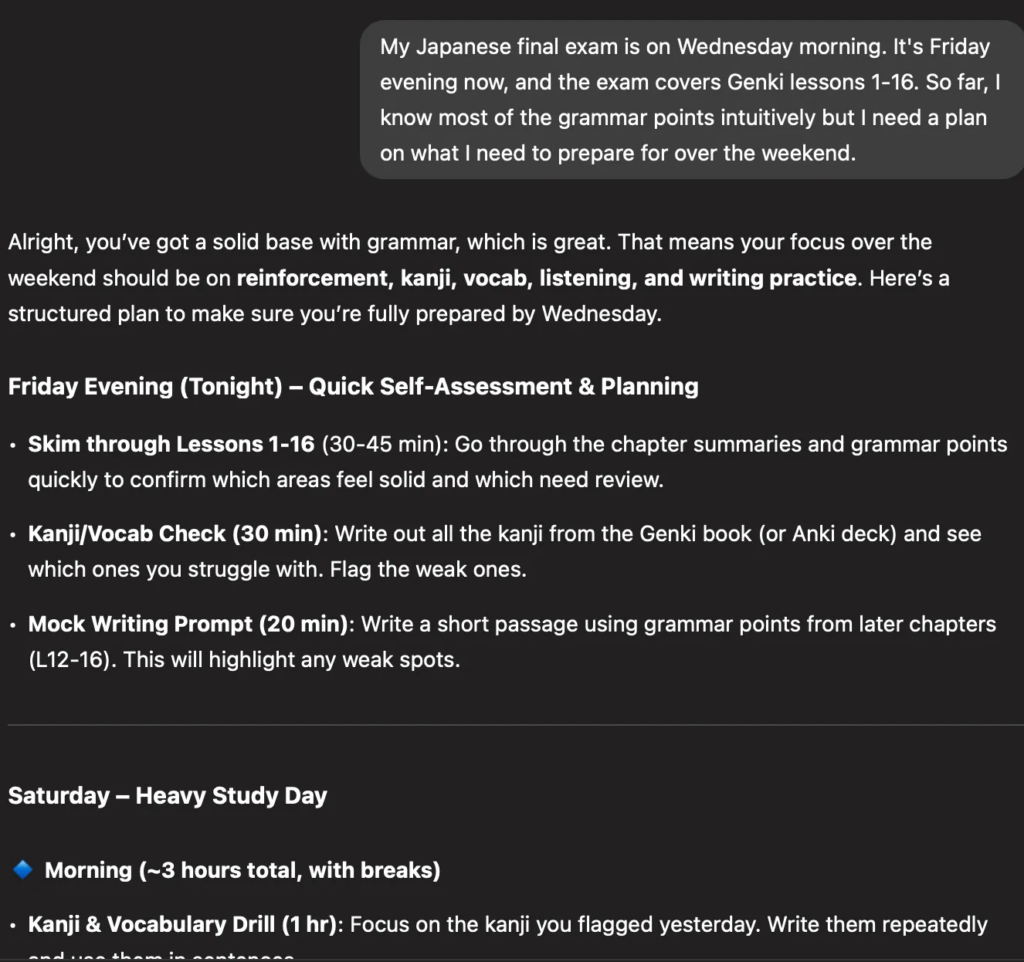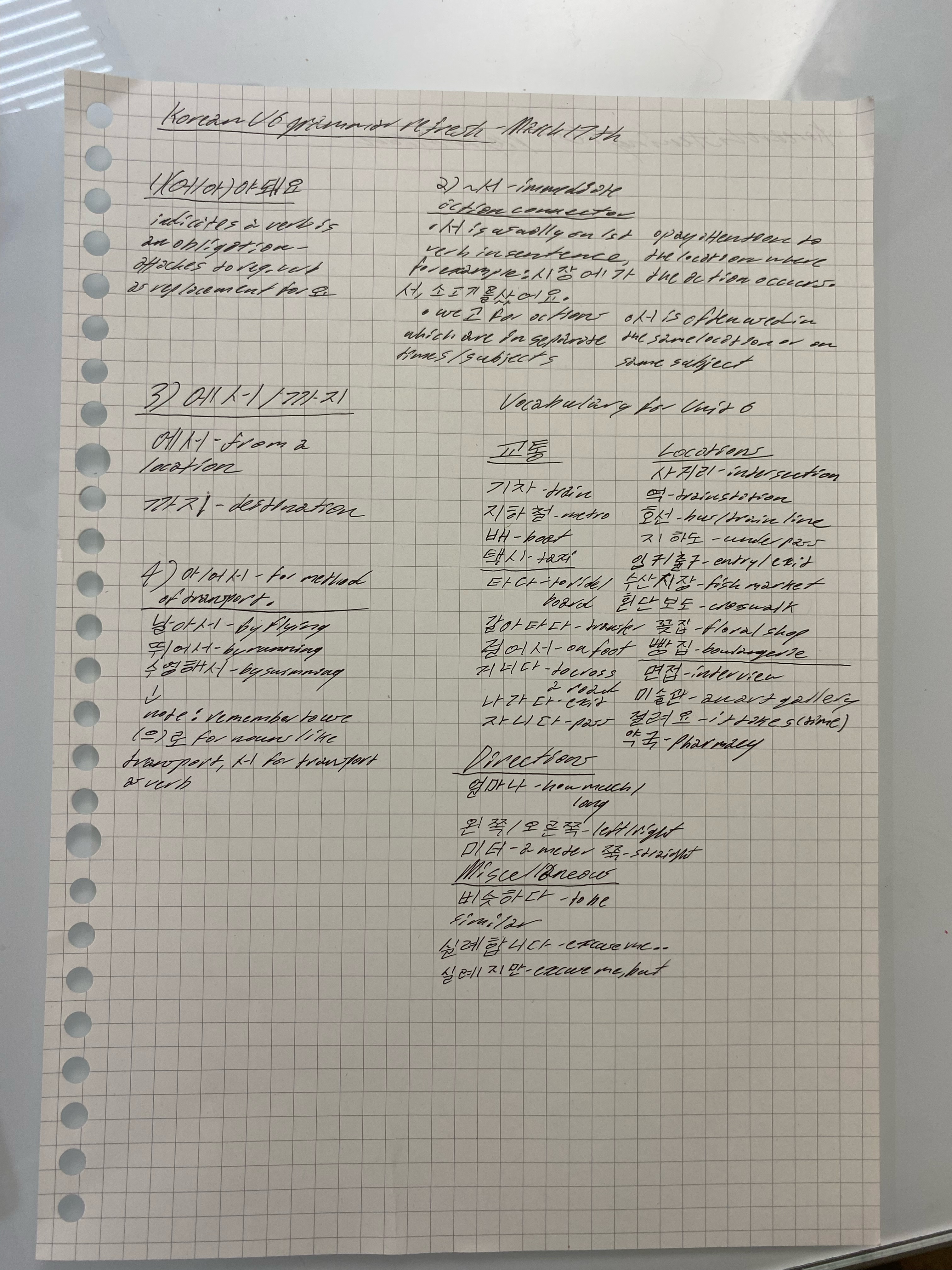Surviving your first year at university is almost never an easy task. Keeping track of exam days, assignments to get done, or merely understanding your material can be overwhelming without external help, like an academic advisor, which many students struggle to find in between class time. Now, with generative AI chatbots (or GenAI, for short), students can summon a personalized guide to their work on command. Chatbots excel at breaking down larger chunks of information, or providing feedback during times when a professor can’t give it to you on time.
First of all, allow me to add some context. I’m taking humanities at UVIC, with a specialization in Pacific and Asian Studies. When I first started EDCI 136, I put myself through an experiment with using ChatGPT to break down complicated tasks from my other courses I was taking at the time- Japanese and Korean language classes.
For the past three months, I’ve been using ChatGPT to help me break down aspects of learning new languages, as well as using it to create study schedules and self-reflection reports pre and post-exam. In this guide, I’ll show you how I did it, as well as some rules of thumb to keep in mind when using a similar method to mine.
A quick warning before we start: check if your university allows usage of GenAI to supplement your learning. It usually depends on the professor for each course, but some will openly welcome ethical usage of chatbots, whilst others ban their usage entirely. This method of using AI tools to supplement learning is not intended to immediately give you the answer to your problems.
*“Leveraging AI to complete assignments at schools can violate academic integrity if it circumvents the learning process. It’s crucial to distinguish between using AI as a tool for understanding, and using it to bypass genuine student effort.”-* ProctorEdu
It’s more designed to let the chatbot become an individual ‘coach’ that will lead you to the answer yourself, and allow you to become the best version of yourself calibrated for testing and improved confidence in the languages you learn. It’s also worth noting that the solutions made by chatbots like ChatGPT aren’t completely bulletproof.
A survey conducted by Lu Jianhao conducted on geography students found whilst ChatGPT can be a useful tool for providing self guided feedback to students, it can be prone to hallucinations (that’s presenting misinformation with full confidence) and conflicting opinions with the professor of that course.
My methodology for AI-assisted coaching
Creating study schedules for testing
Using ChatGPT to setup timelines on what I needed to study before testing was what I used it for the most often, and here’s a simplified guide on how I used it.
- Give ChatGPT details about the test’s format- especially the amount of time that you have before the test.This will allow ChatGPT to give more details on what material should be practiced on each day in preparation for the actual test.My Japanese final exam is on Wednesday morning. It’s Friday evening now, and the exam covers Genki lessons 1-16. So far, I know most of the grammar points intuitively but I need a plan on what I need to prepare for over the weekend.An example of a prompt I used asking for a study schedule for my Japanese final exam. (below)

- Reformat the schedule on paper.
Like with grammar, this will help to further reinforce what needs to be done. Think of it this way; the prompt you give ChatGPT is the information that’s been captured and by putting it on paper, it reenforces it into your memory.
- Assess weak points and practice your material according to your new schedule.
Here, you have room to write down memos for yourself on potential weakpoints and other elements to practice. My advice would be after all your assignments are submitted to spend one hour specializing in up to three topics that need more practice. If one of your weakpoints going into a Korean quiz is vocabulary, start with that first, then immediately move on to the next priority task. One thing to keep in mind; don’t cram for anything unless you’re forced to by scheduling.
- Reinforcement before test day.
The night before the actual test, skim through any notes you’ve created to see if you can intuitively apply them without looking at the textbook. To do this, try applying your new knowledge by testing yourself, like writing down practice sheets then fact checking your answers against the textbook.
For breaking down grammar points:
Context is everything.
First, provide a briefing to ChatGPT on what you intend to learn upfront- like a grammar breakdown of a certain aspect of a language (for example, the imparfait form of grammar in French, which is used to give explanations or talk about your habits in the past.)
below; asking ChatGPT to break down the 時 form in Japanese, used for describing when an action occurs.

Translate it into your own words and apply it.
Create a reference sheet using the grammar that you asked the chatbot to breakdown to further reinforce the concept in your brain.
Above; a reference sheet I made for a chapter of Korean class in preparation of a quiz.

Conclusion: the results of my experiment
After about three months of testing the methods above, I believe that the ethical use of GenAI can be an effective personal coach for students. My experiment helped me to build greater confidence in Japanese and Korean studies without ever feeling like I was forcing myself to study in a negative way. It made the learning enjoyable. Here are a few of my takeaways:
- Usage of AI to supplement learning is very subjective; it usually depends on the clearance level received by your school, and its individual professors (which may be specific to subjects and Faculties).
- I became way better at time management since I had a clearer schedule of what I needed to do depending on the workload for a specific day. Through my experimentation, I found that GenAI can help with executive functioning, such as planning and task breakdown for students, and still stay within academic integrity guidelines.
- I knew what to practice going into tests and now have a consistent formula that I’ll be using to schedule my studying and reflect post-exam.
I hope through this guide that you’ve learned my thought process for supplementing my learning with GenAI- and that you now know how to ethcially use it yourself.
Leave a Reply